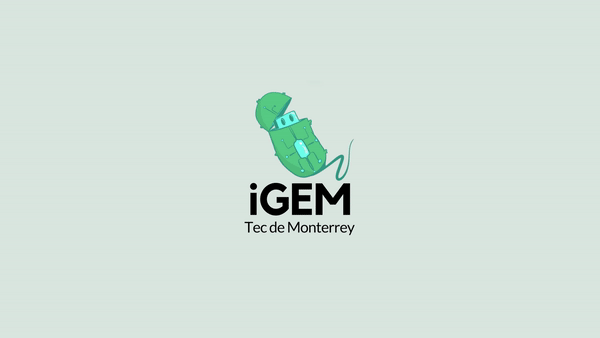| Line 190: | Line 190: | ||
<q>DNA is an attractive target for information storage because of its capacity for high-density information encoding, longevity under easily achieved conditions, and proven track record as an information bearer</q> <br> <b><i>Baum, 1995</i></b> | <q>DNA is an attractive target for information storage because of its capacity for high-density information encoding, longevity under easily achieved conditions, and proven track record as an information bearer</q> <br> <b><i>Baum, 1995</i></b> | ||
<br> <br> | <br> <br> | ||
| − | Nevertheless, this potential has been limited due to the lack of efficient editing tools. CRISPR-Cas has become popular as an editing tool for its high specificity, low cost, and easy handling, compared to other editing techniques. In our work, we use Cas1-Cas2, proteins in charge of new protospacer | + | Nevertheless, this potential has been limited due to the lack of efficient editing tools. CRISPR-Cas has become popular as an editing tool for its high specificity, low cost, and easy handling, compared to other editing techniques. In our work, we use Cas1-Cas2, proteins in charge of new protospacer acquisition in the CRISPR array. Predesigned sequences (-70pb aprox) in the form of ssDNA are produced in <i>E.coli</i> by induction of a promoter, and adquired by the complex Cas1-Cas2 to be integrated into the array. To produce this oligonucleotides, we use the retrotranscriptase EC86 found in the SCRIBE system. A subsequent sequencing or PCR amplification of the array will confirm the integration of the oligos in the CRISPR locus. The integration rate in terms of stimuli intensity, and time. The hypothesis state that this system can store ordered data <i>in vivo </i> of many stimuli, just by changing the promoter. |
</div> | </div> | ||
</section> | </section> | ||
Revision as of 23:40, 17 October 2018

WINDOWS INTERNET EXPLORER AND MICROSOFT EDGE BROWSERS DO NOT FUNCTION WELL WITH OUR WIKI. IF YOU CONTINUE TO USE THIS BROWSER, NAVIGATION WILL NOT BE EASY AND THE EXPERIENCE WILL NOT BE COMPLETE. PLEASE USE GOOGLE CHROME, SAFARI, OR MOZILLA FIREFOX
Tec-Monterrey
E. coding
E-Coding
Storing the world one base at a time
The research for storing vast amounts of information in smaller devices has been an attention seeking topic in multidisciplinary areas of knowledge all around the world.
Baum, 1995
Nevertheless, this potential has been limited due to the lack of efficient editing tools. CRISPR-Cas has become popular as an editing tool for its high specificity, low cost, and easy handling, compared to other editing techniques. In our work, we use Cas1-Cas2, proteins in charge of new protospacer acquisition in the CRISPR array. Predesigned sequences (-70pb aprox) in the form of ssDNA are produced in E.coli by induction of a promoter, and adquired by the complex Cas1-Cas2 to be integrated into the array. To produce this oligonucleotides, we use the retrotranscriptase EC86 found in the SCRIBE system. A subsequent sequencing or PCR amplification of the array will confirm the integration of the oligos in the CRISPR locus. The integration rate in terms of stimuli intensity, and time. The hypothesis state that this system can store ordered data in vivo of many stimuli, just by changing the promoter.
DNA is an attractive target for information storage because of its capacity for high-density information encoding, longevity under easily achieved conditions, and proven track record as an information bearer
Baum, 1995
Nevertheless, this potential has been limited due to the lack of efficient editing tools. CRISPR-Cas has become popular as an editing tool for its high specificity, low cost, and easy handling, compared to other editing techniques. In our work, we use Cas1-Cas2, proteins in charge of new protospacer acquisition in the CRISPR array. Predesigned sequences (-70pb aprox) in the form of ssDNA are produced in E.coli by induction of a promoter, and adquired by the complex Cas1-Cas2 to be integrated into the array. To produce this oligonucleotides, we use the retrotranscriptase EC86 found in the SCRIBE system. A subsequent sequencing or PCR amplification of the array will confirm the integration of the oligos in the CRISPR locus. The integration rate in terms of stimuli intensity, and time. The hypothesis state that this system can store ordered data in vivo of many stimuli, just by changing the promoter.

Human Practices
Pollutants in Chiapas and Mexico
Our project has many applications, but we decided to face a critical environmental problem in one southern state of Mexico: Chiapas. Chiapas is a beautiful state with megadiverse ecosystems, but it also has a severe water pollution problem that affects many communities close to the natural and polluted water sources. With the help of Cecropia and CONANP we will obtain water samples from the polluted sources and analyze them with several techniques in order to make a valuable overview.


